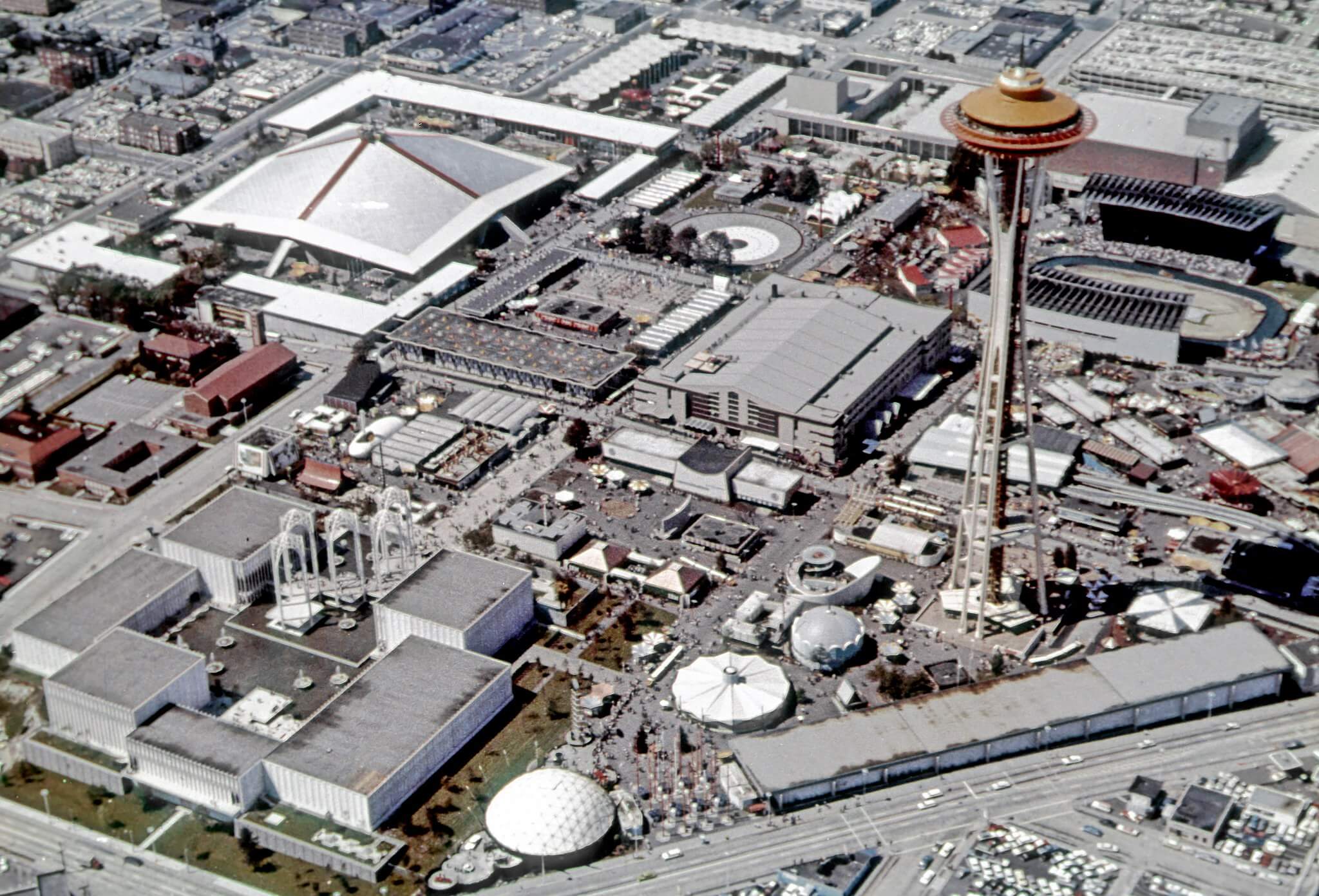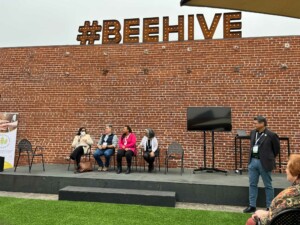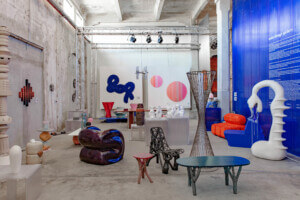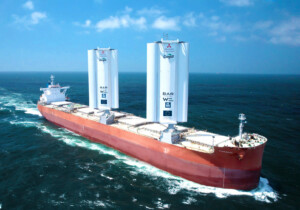Completed in 1962 as one of the most emblematic Seattle Center landmarks that isn’t the Space Needle or Minoru Yamasaki’s Pacific Science Center, the Century 21 Exposition leftover initially known as the Washington State Pavilion has reopened in the Emerald City following a four-year metamorphosis. While key architectural elements of the old arena including its roof were painstakingly preserved, most of the facility has been rebuilt and remolded into a state-of-the-art live sports and entertainment venue worthy of its new name: Climate Pledge Arena.
Famous as the erstwhile home of the NBA’s Seattle SuperSonics from 1967 through 2008 (save for a seven-season stint beginning in 1978 at the old Kingdome) when it was known as KeyArena (1995-2018) and, before that, the Seattle Center Coliseum (1964-1994), Climate Pledge Arena was christened this past Friday with a Coldplay concert streamed live on Amazon Prime. The following evening, on October 23, newly established NHL franchise the Seattle Kraken took to the ice for its first home game in a sold-out match against the Vancouver Canucks. (In addition to the Kraken, the new arena is also home to the WNBA’s Seattle Storm.) While the Kraken may have been defeated 4-2 by the Canucks, the loss didn’t detract from the excitement of the arena’s long-awaited rebirth.
As for its new moniker, which Kraken fans reportedly seemed mostly indifferent to, it was bestowed to the arena last year by Amazon’s Jeff Bezos in a notable and not entirely popular departure from the usual corporate naming rights conventions. (While Amazon acquired naming rights to the arena, the facility itself is owned by a public-private partnership between Los Angeles-based Oak View Group, the Seattle Kraken, and the City of Seattle.)

While it could have emerged from its $1.15 billion transformation as “The Alexa Center” or something similar, the venue’s name instead draws attention to the “importance of fighting climate change” per Bezos. As such, the new arena touts its dedication to operating in a manner that’s environmentally sustainable as possible for a 740,000-square-foot multipurpose indoor arena—one that now ranks as the largest in the Pacific Northwest. And considering Climate Pledge Arena’s location at the site of the 1962 World’s Fair where visitors were offered a glimpse into “The World of Tomorrow,” the arena’s sustainable design attributes take on an extra layer of salience.
Designed by architect of record Populous, which worked alongside a larger team that included project manager CAA ICON, structural engineer Thornton Tomasetti, and construction partner M.A. Mortenson, Climate Pledge Arena is on track to become the first-ever facility of its kind to achieve net-zero-carbon certification from the Seattle-based Living Future Institute.
The all-electric Climate Pledge Arena is powered entirely by on- and off-site renewable energy sources including a rooftop solar photovoltaic array. As noted in a press release, Populous also contributed to a “fully-integrated transportation plan that subsidizes mass transit for fans.” There’s also on-site electric vehicle charging stations and bike valet services. And while there’s not a Link light rail station in the immediate vicinity of Seattle Center, the arena has “strong connections with the Monorail,” another beloved World’s Fair remnant that provides a direct link between downtown Seattle’s Westlake Center transit hub and Seattle Center. The revamped arena also implements zero waste initiatives and numerous water conservation strategies including a “roof to rink” rainwater harvesting system in which water collected in a 15,000 gallon cistern is used to make “the greenest ice in the NHL.”
Climate Pledge Arena has been wholly redeveloped and, in turn, offers a dramatically different visitor experience than during the venue’s previous lives. However, Populous has, as mandated by National Park Service and the Seattle Landmarks Preservation Board, retained key features of the building, which was listed on both the Washington Heritage Register and the National Register of Historic Places in 2018. Notably, the the old arena’s iconic (and previously rebuilt) roof, which was originally cable-suspended until it was replaced with a fixed facsimile 30-some years ago in the same shape as Paul Thiry’s iconic design for the Washington State Pavilion, still soars high above the Seattle Center campus. During the construction process, the 44 million-pound roof was lifted above the site while excavation work was underway to expand the arena below to twice its former size. As detailed by Populous, in order to expand the arena’s footprint on all sides, the team had to dig 16 feet deeper than a major 1990s-era NBBJ-led overhaul that bottomed out at 38 feet below ground.
In addition to the roof, another element of the old Coliseum/KeyArena that is still in place is a glass curtain wall that was preserved on the northern end of the arena. It now provides expansive views out into one of several newly created plazas and public green spaces that flank Climate Pledge Arena on all sides. As noted by the firm, the plazas “effectively place the arena within a picturesque landscaped park,” which is a first for an urban professional arena in the United States.

Major elements of the new plazas include eight major public art installations created by a diverse group of Pacific Northwest artists and a familiar sight in the form of 67 London Plane trees planted for the 1962 World’s Fair. As detailed by Populous, “these trees maintain a massive canopy on the site, aid in carbon capture, and connect surrounding neighborhoods with the expansive Seattle Center campus.” (In total, Seattle Center, which was developed for the World’s Fair and is now home to numerous touristic attractions and cultural and educational institutions, spans 74 acres just north of Seattle’s downtown core between the Belltown and Lower Queen Anne neighborhoods.)
“Creating the world’s best live entertainment building while celebrating an important and cherished landmark is what sets Climate Pledge Arena apart,” said Populous senior principal and architect Chris Carver in a statement. “We are proud to have created an industry-leading design that fits with the vision of our partners at Oak View Group and the City of Seattle to be a benchmark for venues to come.”
Other notable features of Climate Pledge Arena include a record-setting 28,175 square feet of digital signage, a 200-foot living wall along the main concourse, and a quartet of “food and beverage environments” powered by Amazon’s checkout-free Just Walk Out technology. It also boasts the world’s first dual suspended arena scoreboards, which Populous principal Geoff Cheong described as “centerpieces to an entertainment experience unlike any other.”
Aside from forthcoming Kraken home games, scheduled upcoming events at Climate Pledge Arena include a stop on comedian Trevor Noah’s world tour, and, just in time for the holidays, a two-night stop on the Trans-Siberian Orchestra’s Christmas Eve and Other Stories 25th anniversary tour.











